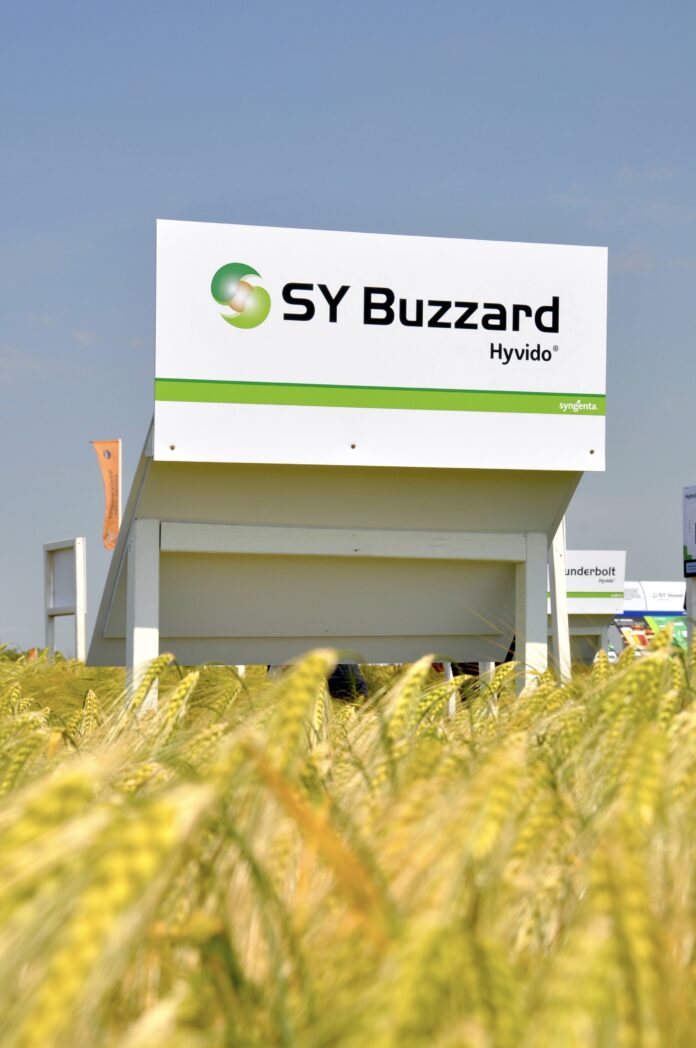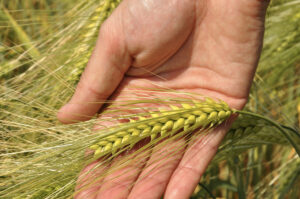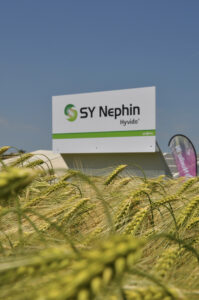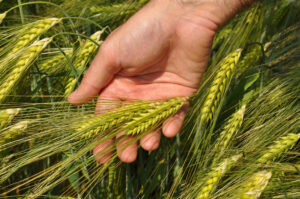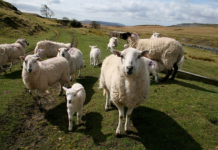Two new hybrid winter feed barley varieties offering enhanced defence against two of the major yield-robbing winter barley diseases are being launched by Syngenta for planting this autumn.
SY Nephin, which has a UK treated yield of 105% on the AHDB 2023-24 winter barley Recommended List (RL), brings growers the highest Rhynchosporium resistance rating currently available on the RL, says Syngenta seeds technical expert, Ben Urquhart, scoring 8 on the 1-9 scale.
Meanwhile, SY Buzzard, which has a treated yield of 104% on the AHDB winter barley Candidate List, is the first Syngenta hybrid barley available that brings barley yellow dwarf virus (BYDV) tolerance, he adds.
“Rhynchosporium is the number one damaging fungal disease of winter barley, causing yield losses of over 1.5 t/ha as well as having the potential to impact grain quality,” says Mr Urquhart. “BYDV, which is transmitted by aphids, can cause winter barley yield losses of up to 50%.
“Both SY Nephin and SY Buzzard provide the hybrid vigour benefit of hybrid barley – which is associated with high and stable yields, vigorous rooting and competitive growth against a range of grass weeds. But they also bring other benefits,” he adds.
For SY Nephin, Mr Urquhart says, as well as its 8 rating against Rhynchosporium, these include a high untreated yield of 90% of treated controls on the RL, a high specific weight of 71.4 kg/hl, and barley yellow mosaic virus (BaYMV) resistance.
“Strong Rhynchosporium resistance offers growers potential breathing space if fungicide sprays are unavoidably delayed,” he explains. “In Syngenta trial plots, SY Nephin has also shown good rooting, and produced superior crop establishment to a conventional six-row winter barley following no-till and deep-till cultivations. SY Nephin is also relatively short-strawed compared with other hybrids. Overall, it looks set to be a straightforward hybrid to grow.”
Meanwhile, Mr Urquhart says scenarios in which to consider growing BYDV tolerant SY Buzzard include: in areas of the country at higher BYDV risk; in fields where delaying drilling to reduce aphid numbers is not possible; and on farms seeking the £45/ha Sustainable Farming Incentive payment by growing the crop with no insecticide.
Mr Urquhart says: “Growing a BYDV tolerant barley is an important part of an overall strategy to manage BYDV risk. In Syngenta trial plots inoculated with BYDV-infected aphids to create high BYDV pressure, SY Buzzard showed only mild virus symptoms and suffered minimal yield loss.
“Other agronomic benefits of SY Buzzard include Rhynchosporium and net blotch resistance ratings of 7 and 6 respectively on the AHDB Candidate List, low levels of lodging and brackling, and resistance to BaYMV. SY Buzzard has also performed particularly well in the East.”

For this autumn, Mr Urquhart says while SY Nephin will be widely available, seed of SY Buzzard is in limited supply. However, its launch marks the start of a pipeline of Syngenta hybrid barleys with BYDV tolerance, he notes.
“Ever since we launched hybrid barley we have been improving the crop’s agronomic characteristics. As well as improved disease tolerance, a big success has come from breeding hybrid barley with higher specific weights. Around one in three winter feed barley fields are now planted with a hybrid,” he adds.
Help keep news FREE for our readers
Supporting your local community newspaper/online news outlet is crucial now more than ever. If you believe in independent journalism, then consider making a valuable contribution by making a one-time or monthly donation. We operate in rural areas where providing unbiased news can be challenging. Read More About Supporting The West Wales Chronicle





















